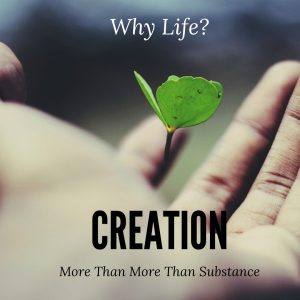Sometimes you hear the statement “it’s just a clump of cells” tossed around as a description of the unborn. While at both a scientific and philosophical level this view is problematic, theologically it is completely untenable. And since theology, like science and philosophy, is concerned with the way things actually are (what Dallas Willard calls “knowledge about reality”), any of us that are concerned with the theological underpinnings for our life convictions must be ready to think about a theology of life (for more on this, see the first post here).
But where do we start? While there are various launching off points, I think the very nature of the work we do points us in an apt direction. Pregnancy is about the genesis of life, the creation of a human being, the origins of a new person. And since God is the one who brought life from non-life and personhood from non-personhood, it behooves us (I challenge you to find a way to use that word in your normal conversation today!) to begin where Scripture most directly addresses genesis, creation, and origins: The Book of…wait for it…Genesis (who would have seen that coming!).
Genesis presents us with three types of creation. We might call these (1) mere substance, (2) more than substance, and (3) more than more than substance. I’ll unpack all these below and pull together towards the end how it influences a theology of life and then reflect a bit on how that impacts the work we do.
The mere substance refers to matter, non-life possessing objects. These objects, although potentially intricately beautiful and awe inspiring, are merely objects. Water, air, light, land, etc. These were formless and void (Tohu Va-Vohu) before being shaped by God into order and purpose. These creations may have virtue by the sake of being created by God (we should not go about blowing up mountains just because we want to!), but they lack what throughout all humanity we have believed to have inherent worth by their very existence. A mountain, if you kick it, will have no feelings about you kicking it. Nuclear fusion may come about because of a process, but that process is mere physics.
The second kind of creation we can call more than mere substance. It is distinguished from substance along one and only trait: life. In this category, we put plants, animals, and humans. All of these are distinguished from each other in the kind of life they possess (plants lack blood, a brain, a heart, and conscience) but all have a certain sacredness in the very fact that they were created to live. Because they are made with life, they possess a certain sacredness to it. We see trees in the forest communicate with each other through underground networking; animals flee from predators to save their lives. Even ants work together in cooperation and organization to protect the hill! While we do not accord animals and plants the same sort of virtue and value we do to humans, we do ascribe them a higher value than mere substance. This is why we consider the boy who tortures a spider by starving it to death a bit cruel (and the boy starving a rock a bit odd) and why we do not equivocate the throwing of cats into the river with throwing rocks into the river (please, do not get any ideas!).
The third kind of creation is what I call more than more than mere substance (say that five times fast!). This creation is specifically reserved for humans. It is what distinguishes humans not merely from rocks and water but also from plants and animals. It is what divides the “good” of creation from the “very good” of creation (Gen 1.31). It underlies all our values of right and wrong, our conscience, our human and civil rights, and the Golden Rule of how we are to treat and value each other.
One of the problems with a “mere tissue” or a “clump of cells” approach to the development of the baby in the womb is the suggestion that humanity can ever be reduced to either one of those first two categories. Scripture doesn’t give us that option. There is no linear development. No progression from “mere substance” to “more than mere substance” to “more than more than mere substance.” There is simply the transformation of “mere substance” into “more than more than mere substance.” Neither life, nor humanness, nor personhood ever develop. They are endowed by the will of God to create someone. Life from non-life. Personhood from non-personhood. Humanity from non-humanity.
The other day I was reviewing our client files and came across a client that is sometimes typical of what happens when someone realizes that there is more than more than mere substance inside of them. This client had reached out via Telecare stating that was considering having an abortion. She was several weeks pregnant, already had a child to raise, and was uncertain about her ability to care for a newborn. We almost missed this client. She hung up mid-way through our Telecare appointment but called back after a few days—and some follow up work from our Telecare nurse—to schedule an ultrasound appointment to determine how far along she was. The client came in, vacillating between abortion and carrying to term but immediately upon seeing the heartbeat on the ultrasound the client knew the child was alive. “I think it is a boy,” she said. Not “will become a boy.” Not “has the potential to be a boy.” “I think it is a boy,” she said. More than more than mere substance.
Creation speaks to why we are for life. It points to the very deep reality that humanity can never be relegated to mere substance. We are, by the virtue of God’s desire to bring substance to life, always more than tissue, more than cells, more than a body. We are, in fact, images of God, breathed into life by his will (Gen 2.7; Jn 1.3-4). No amount of language can get around this: born or pre-born, we are created by God’s will and therefore are always more than more than mere substance. And that is good news!

